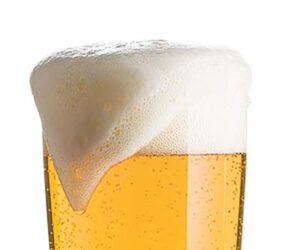Beer Styles and Statistics
The concept of beer styles can be viewed in (at least) two different ways. One possible school of thought is that beer styles are merely ways in which people can categorize types of beer into pigeonholes. The mantra for this camp might be something like, “style boundaries are limiting and oppressive.” An opposing school of thought is that the concept of beer styles can be a useful way to help us all deepen our understanding and appreciation of the richly diverse spectrum of beers that are brewed today, and that have been brewed throughout history. The mantra for this camp might be something like, “through quantification comes understanding and appreciation.”
Both ways of thinking have merit. Innovative brewing, outside of style guidelines, is part of the great joy of homebrewing. Brewing unconstrained by the “boundaries” of style guidelines has allowed for the creation of many wonderful new kinds of beer. Eventually, these new, innovative kinds of beer may become so popular and well received by beer aficionados that a new style category is born.
No matter the school of thought with which a brewer is most closely aligned, the concept of beer styles can help deepen our appreciation for beer’s diversity and even show us areas in which we might choose to focus our innovative brewing efforts. Using beer style statistics we can better understand beer, and the relationships between different beer styles.
BJCP vital statistics

The flavor style components are certainly critical in defining a beer style, but they are somewhat difficult to quantify. A beer’s vital statistics are, however, relatively easy to quantify and are well defined for a given beer style. A graphical comparison of beer styles based upon the 2008 BJCP vital statistics (www.bjcp.org) is presented below showing the relationship between bitterness-to-OG ratio (BU:GU), color (SRM) and alcohol content (ABV) for many of the BJCP beer styles.

The bitterness-unit to gravity-unit ratio (BU:GU) helps understand the relative bitter vs. malt-sweetness balance within a given style category. A larger ratio generally means that there should be more hop-bitterness character to the beer style, while a lower ratio means that the beer style should generally be sweeter. According to the information in Designing Great Beers by Ray Daniels, this ratio is calculated by dividing IBU by original gravity as expressed by gravity units. Gravity units are calculated using the equation below:
GU = (OG-1) x 1000
For example, the BU:GU ratio for a beer with an IBU of 40 and OG of 1.050 is calculated as:
BU:GU = 40 / ((1.050-1) x 1000) = 0.80
Each circle’s size and position on the graph represents the average values of the ranges for the BJCP sub-style
category. The number and letter combinations within the circles correspond to the BJCP style category and sub-category designations (e.g. 13A = dry stout). Larger BU:GU means increasing hop bitterness character. Larger SRM values mean that the beer is darker. Larger circles mean higher ABV.
In addition to examining the overall beer-style space, it is interesting to look for correlations between various style parameters. For example, you may have heard someone say something like, “dark beers are usually bitter.” A way to validate or refute this statement is to take the average values for the ranges of the vital statistics for the various beer styles and plot them against each other. Once this is done, a statistical regression analysis can be performed and the numbers charted to find which factors are and aren’t correlated.
Even factors that are not strongly correlated may be correlated to a sufficient degree such that their relationship is statistically significant. This statistical significance can be determined by applying a statistical test for analysis of variation (ANOVA) to the correlation regression. This test yields a number known as a “p-value.” The p-value can be thought of as the probability that the two factors are not correlated. Generally, p-values can be interpreted as follows:

Based on the p-values shown here, we can conclude that the only statistically significant correlations between any of the examined beer style variables is the relationship between BU:GU ratio and color. The relationship between BU:GU ratio and color is statistically significant (p=0.010), but the correlation is very weak (R2 = 0.089).
Conclusion
No matter your personal stance on style guidelines, I believe that it is only through an understanding of where we are that we may control where we are going. Innovative brewing can be most effective only if it is based on sound brewing techniques and guided by the knowledge that we have available. Style guidelines should not be thought of as constraints and absolutes, but rather as well-defined possibilities within a broader realm. They can be thought of as windows through which we look out into the vast expanse of brewing possibilities that lie beyond our present experience.


